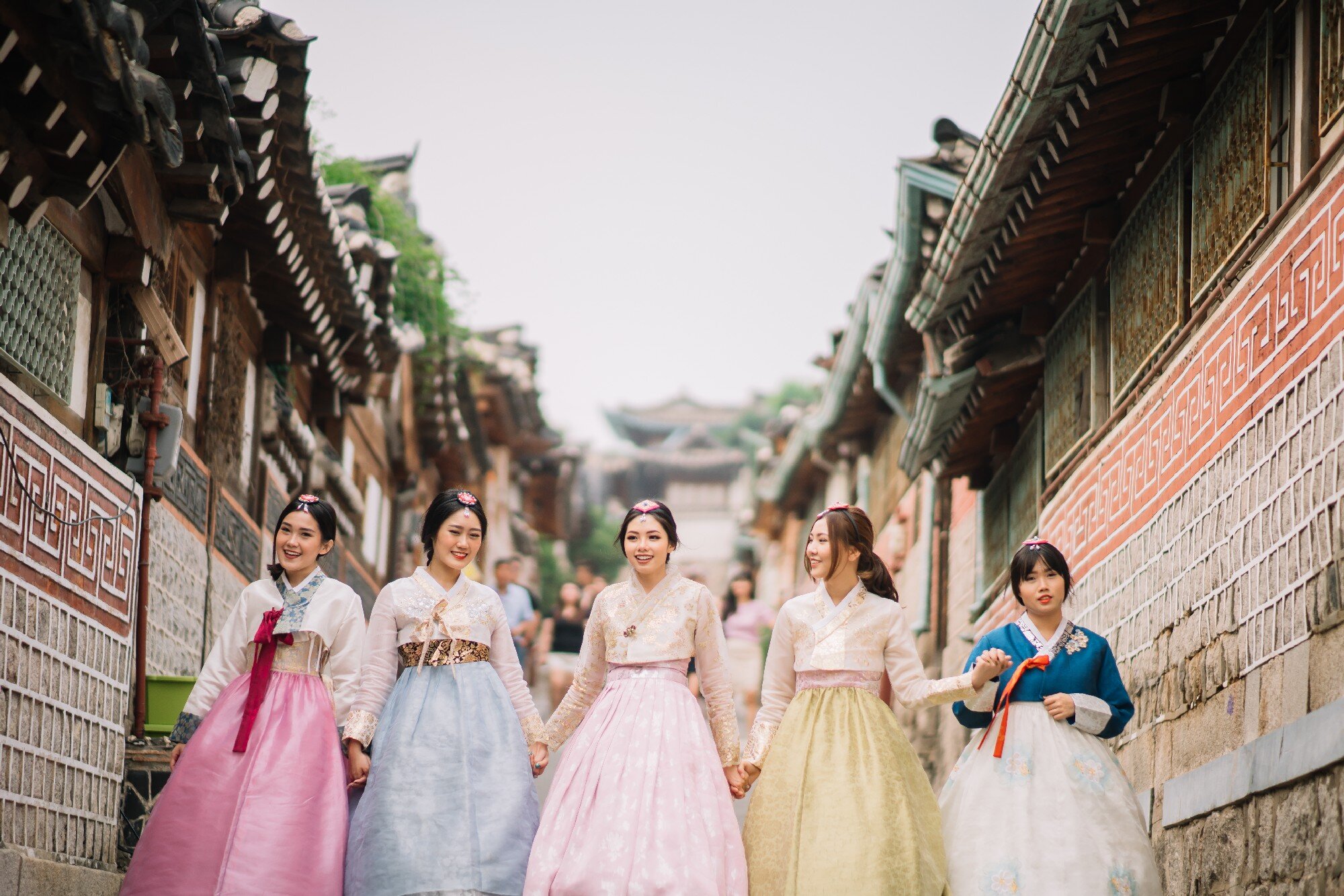Holiday Glam
It’s important we help keep tradition alive. If we lose tradition, we lose our roots and risk forgetting what generations before have done. I’m talking about keeping the tradition of our Asian outfits. Clothing is a central component of tradition, different Asian countries all have different outfits. Every traditional Asian garment is unique and tells a story that’s important to hear.
Vietnamese New Year Outfits
When celebrating the new year, Vietnamese people will wear an ao dai. The ao dai is made of silk and is donned by both men and women. The ao dai has a long silk tunic with slits on the side and has a matching fabric headpiece. In the south, women also wore an ao ba ba, which is a simple blouse with a scoop neck and buttons in the center, often wore with a conical hat. In Northern Vietnam, the traditional dress is called an ao tu, which means ‘a dress with four parts.’ It has four panels of fabric, a long sash in the front, and is worn with a large, round hat.
Brunei
Brunei individuals will wear a baju kurung, which is a long tunic over a long skirt. These are worn by both women and men will wear a baju cara melayu, which is a tunic and long pants. The baju cara melayu is worn with a plaid or a floral pattern sarong, called a sinjang and it goes from the waist to the knees. Women will wear the baju kurung to work and for formal occasions.
Hanbok
This is South Korea’s national dress. With roots in northern Asia, this dress was designed for the ease of movement. The jeogori (jacket), baji (pants) and chima (skirt) was designed during the Goguryeo Kingdom (37 BCE-668 CE) and to this day remains unchanged. The Hanbok can be considered not only as a ceremonial dress, but as an everyday item as well. The dress circles around the fondness for naturalness, desire for supernatural protection and blessings.
Chut Thai
This outfit is from the 'land of smiles' - Thailand. In the past, men and women wore cotton and silk garments wrap-around called the chong kraben. Men wore shorts to the middle of their thighs and women covered to the shin. The national dress for men were designed by royal tailors in 1970s, who were tasked to create garments for the King to wear for formal events. These are but few of the many traditional outfits worn by people in Asian Countries. It’s important to recognize and understand where the clothing originated from and most importantly, to celebrate its timeless beauty.




